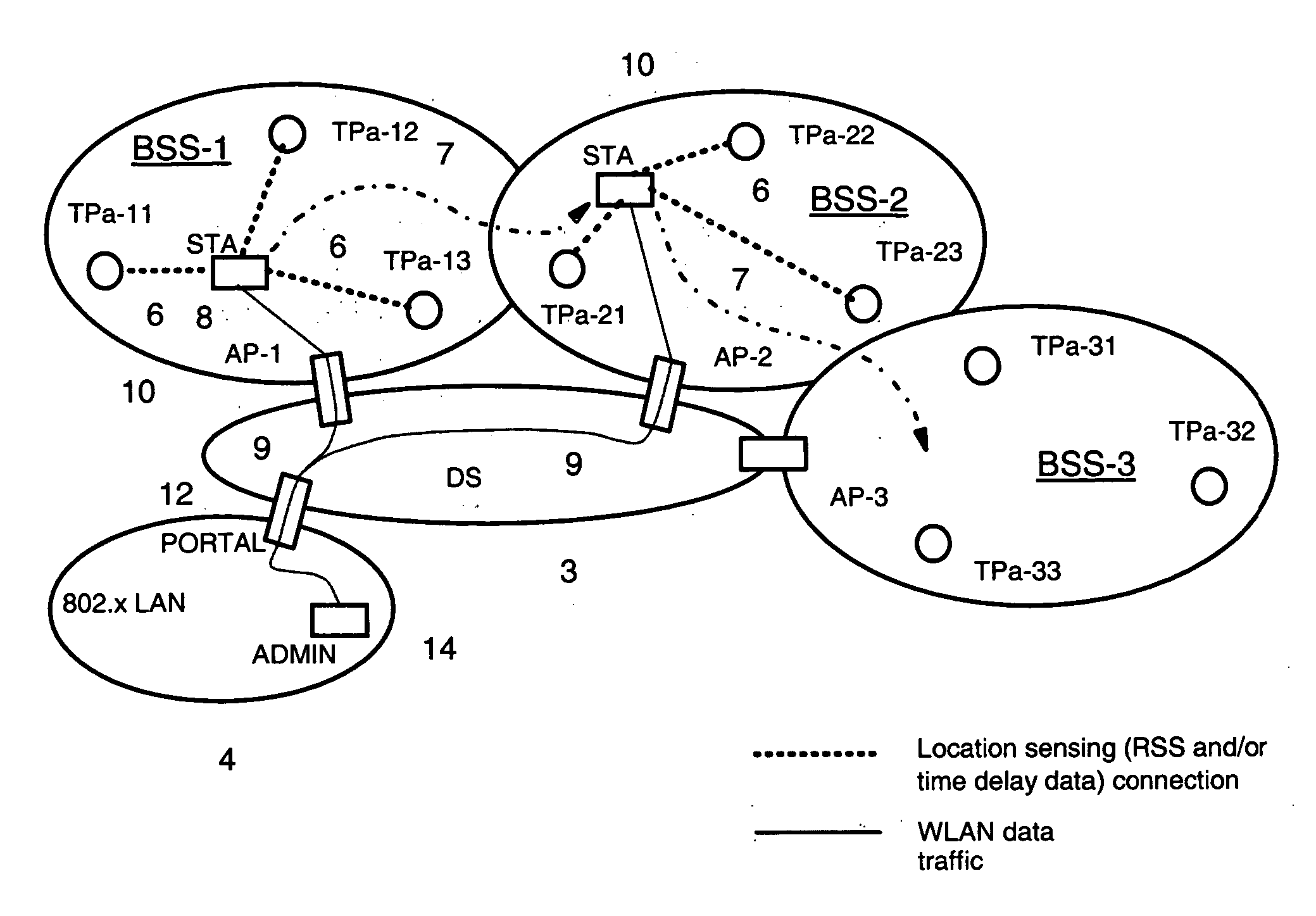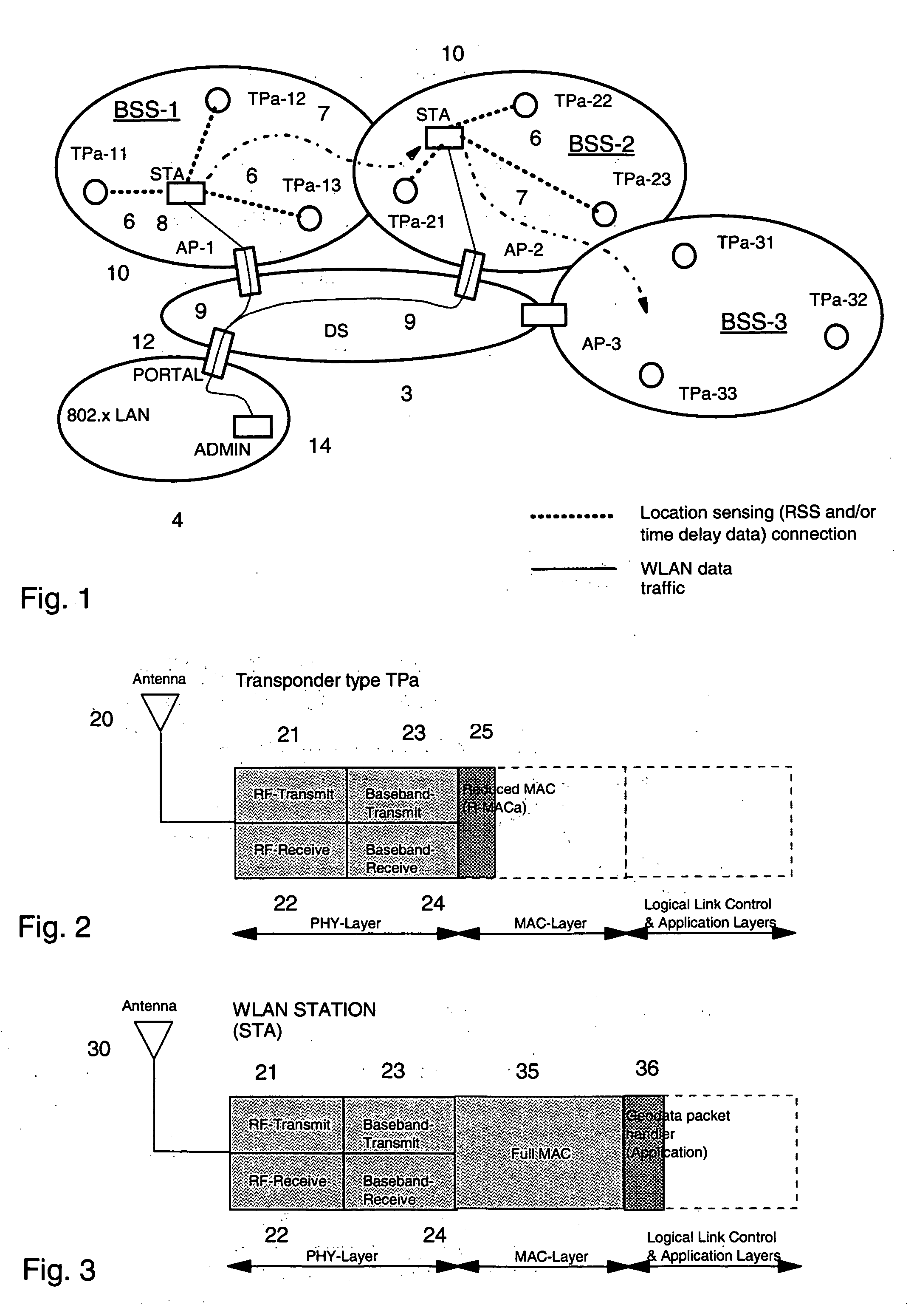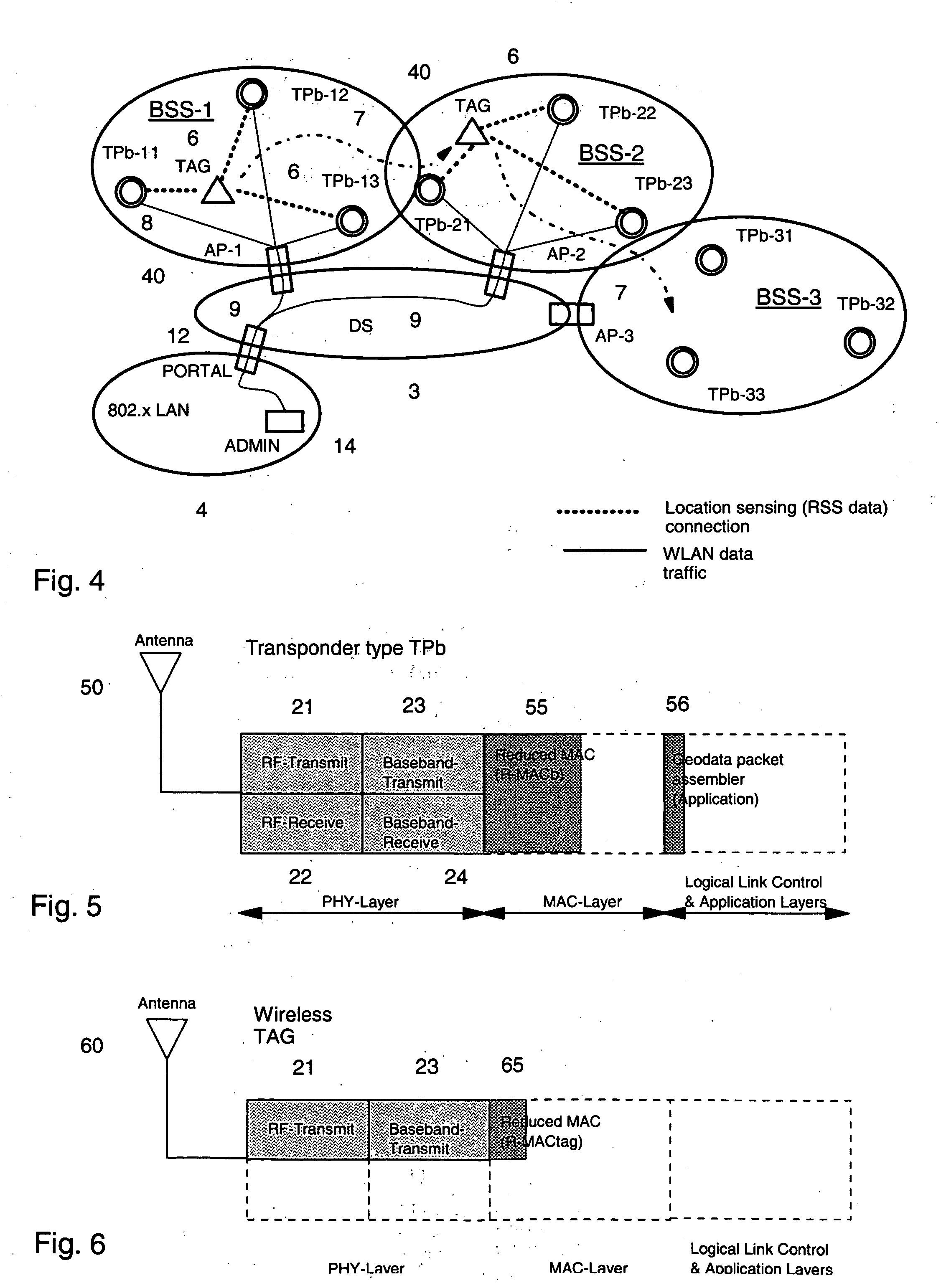Transponder subsystem for supporing location awareness in wireless networks
a wireless network and subsystem technology, applied in special services for subscribers, navigation instruments, instruments, etc., can solve the problems of substantial protocol overhead, inability to provide accurate indoor geolocation, application possibilities of additional geolocation functionality, etc., to avoid disadvantages and be easily attached to goods
- Summary
- Abstract
- Description
- Claims
- Application Information
AI Technical Summary
Benefits of technology
Problems solved by technology
Method used
Image
Examples
Embodiment Construction
[0052] With reference to FIG. 1, a general layout of a communication environment is described in which a location transponder subsystem for localizing wireless local-area network (WLAN) communication devices can be used. In the figures, same reference signs are used to denote the same or like parts. Before embodiments of the present invention are described, some basics, in accordance with the present invention, are addressed.
[0053] The location of a communication device, i.e. a mobile station or tag, can be determined by using a triangulation method or a signature method.
[0054] The triangulation method is based on the trigonometric calculation of the sought position by taking the estimated line-of-sight propagation distances between mobile station and fixed responding stations into account. The estimated propagation distances can be derived from either line-of-sight propagation time measurements (TD) or from a wireless channel attenuation model estimating the propagation distance ...
PUM
 Login to View More
Login to View More Abstract
Description
Claims
Application Information
 Login to View More
Login to View More - R&D
- Intellectual Property
- Life Sciences
- Materials
- Tech Scout
- Unparalleled Data Quality
- Higher Quality Content
- 60% Fewer Hallucinations
Browse by: Latest US Patents, China's latest patents, Technical Efficacy Thesaurus, Application Domain, Technology Topic, Popular Technical Reports.
© 2025 PatSnap. All rights reserved.Legal|Privacy policy|Modern Slavery Act Transparency Statement|Sitemap|About US| Contact US: help@patsnap.com



